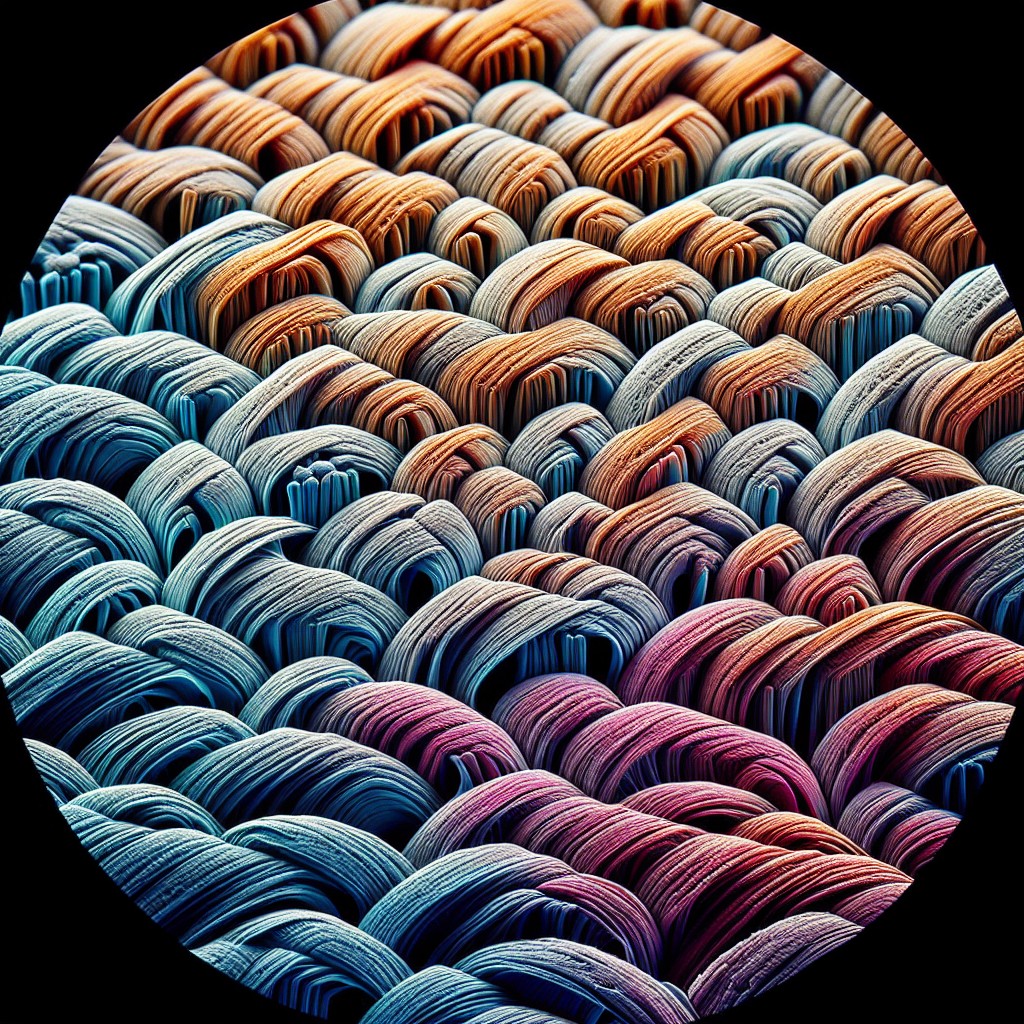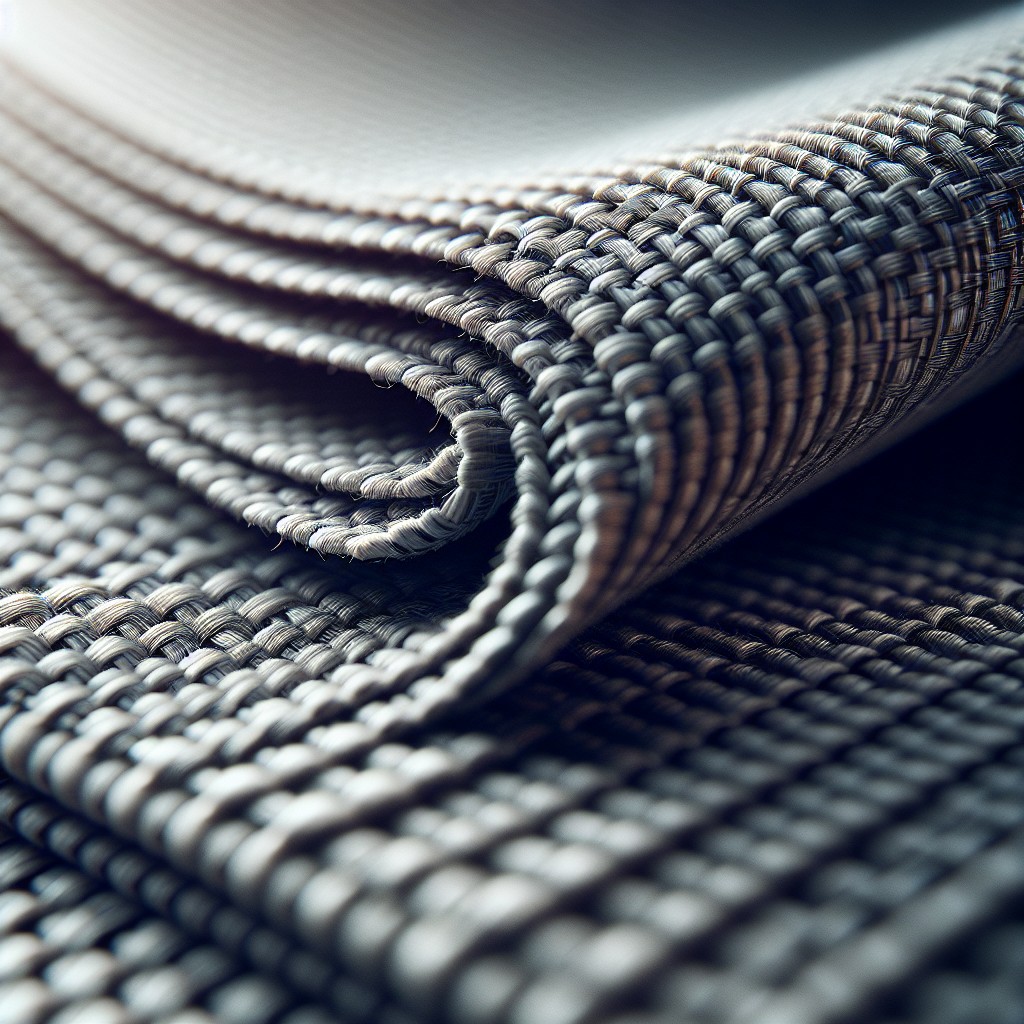Understanding the right blending board cloth matters because it impacts the quality and ease of your yarn crafting, so let’s delve into what makes one more effective than another.
Key takeaways:
- Alignment of Fibers: Teeth align fibers for consistent yarn.
- Mixing Colors and Textures: Blend fibers for unique colorways and textures.
- Control Over Batt Thickness: Gradually build layers for desired thickness.
- Even Distribution: Ensure even consistency in spun yarn.
- Efficient Fiber Transfer: Smooth transfer minimizes waste.
Function of Blending Board Cloth

Blending board cloth is a key component for hand carding, designed with a specific number of metal teeth arranged closely together on a sturdy backing. It plays a pivotal role in combining different fibers, colors, and textures into a homogeneous batt or rolags for spinning.
Here are a few points to explain its functionality:
- Alignment of Fibers: As the fibers are drawn over the cloth, the teeth help align them into a parallel formation, which is essential for producing a consistent yarn.
- Mixing Colors and Textures: By placing fibers of various shades and types onto the cloth, users can pull them through together, effectively blending the fibers to create unique colorways and textures.
- Control Over Batt Thickness: The cloth allows users to build up layers gradually, offering control over the thickness of the final batt, whether for spinning or felting.
- Even Distribution: Its design ensures an even distribution of different fiber materials across the entire surface, contributing to an even consistency in the spun yarn.
- Efficient Fiber Transfer: The cloth’s teeth grip and transfer fibers smoothly onto a storage drum or directly into a user’s hands, minimizing waste.
By using a blending board cloth, fiber enthusiasts can enhance their handspun yarns’ visual and tactile qualities, achieving results tailored to their specific crafting needs.
Types of Blending Board Cloth

Standard blending boards feature a cloth that is fixed to a flat surface, with densely packed wire teeth angled slightly forward to facilitate fiber blending. The cloth is typically made of a durable backing material that can withstand the carding process.
Metallic Blending Board Cloth: This kind includes metallic teeth set in a strong fabric base, designed for extensive use and longevity. It works well with a wide range of fibers and stands up to abrasion.
Fine Texture: Fine teeth are intended for delicate, soft fibers such as angora or cashmere, as they carefully blend without causing damage.
Coarse Texture: Better suited for robust fibers like wool or alpaca, this cloth allows for quicker blending and can handle more fibrous materials without clogging.
Variable TPI: Some cloths feature sections with varying TPI to enable diverse fiber blending on one board.
Custom Cloths: Specialized makers offer tailored options where the spacing and TPI can match unique fiber blending needs.
When choosing the cloth, consider the primary types of fiber to be blended, as the right selection ensures efficient and optimal carding.
TPI (Teeth Per Inch) Variation

Understanding TPI is vital to working effectively with a blending board. TPI indicates the density of the metal teeth embedded in the cloth, affecting how finely the fibers will be blended.
Lower TPIs, with fewer teeth per inch, are ideal for coarser fibers or creating chunkier, more textured blends. Higher TPIs, featuring more teeth, work best for fine fibers, allowing for a smoother, more homogenous blend.
Adjust the TPI based on the desired outcome and the unique characteristics of the fibers in use. For example, delicate fibers like angora or merino often require a higher TPI for a gentle yet thorough blend, while robust fibers such as wool from mountain breeds may benefit from a lower TPI to maintain texture.
Keep in mind that too fine a TPI for coarse fibers could lead to clogging, while a low TPI may not blend fine fibers sufficiently. Balancing TPI with your specific project needs will enhance your fiber preparation and final yarn qualities.
Material and Durability

Blending board cloth is commonly made from metal teeth embedded in a sturdy fabric backing. This construction ensures that the teeth remain upright and evenly spaced for consistent blending results. The type of metal used can range from stainless steel to carbon steel, with stainless steel being more resistant to rust and corrosion, offering a longer lifespan.
Durability is influenced by both the density of the teeth and the quality of the material. Cloths with a higher teeth count per inch will typically be more robust, capable of withstanding the pressure exerted during the blending process without bending or breaking. When properly cared for, a high-quality blending board cloth can last for many projects.
Additionally, the fabric backing is usually made of rubber or a strong canvas material, which supports the metal teeth but still provides enough flexibility for easy storage and transportation. Selecting a blending board cloth with a strong foundation ensures a stable blending surface and helps protect the fibers during the carding process.
Maintenance and Cleaning
Proper care extends the life of your blending board cloth and ensures it works efficiently.
To prevent fiber buildup, use a flick carder or a small wire brush to gently clean between the teeth after each use.
For accumulated dirt, carefully vacuum with a hose attachment, making sure not to bend or damage the teeth.
Avoid using water or detergents, as they can rust the metallic teeth and warp the cloth backing.
If you encounter persistent debris, pick it out carefully with tweezers.
Store your blending board in a cool, dry place away from direct sunlight to prevent the cloth from warping or becoming brittle.
Periodically check for loose or bent teeth and readjust or replace as necessary to maintain an even surface for your fiber preparation.
Compatibility With Different Fibers
A blending board cloth can interact with a variety of fibers, each with distinct properties:
- Wool, a staple in fiber arts, clings well to the cloth’s hooks and is ideal for novices.
- Plant-based fibers like cotton and bamboo require a finer TPI to grip their smooth texture.
- Animal fibers such as alpaca and angora, which are finer and more delicate, also benefit from higher TPIs to prevent damage during blending.
Matching the right cloth to your specific fiber ensures a smooth blending process and preserves the quality of your materials. Keep in mind that shorter fibers may need closer-set teeth to blend effectively, whereas longer fibers work well with a wider spacing to allow for easier draft.
Creating Custom Blends With Blending Board Cloth
Blending board cloth offers a unique opportunity for fiber enthusiasts to mix different types of wool and other materials, leading to personalized fiber creations. With the right technique, you can merge colors, textures, and fiber qualities to suit specific spinning or felting projects.
Start by layering thin wisps of your chosen fibers onto the cloth. Gradually build up layers, alternating between materials to evenly distribute the different fibers. Consider color distribution for a visually appealing result.
If you aim for a heathered effect, mix similar shades. For a more vibrant, contrasting outcome, combine complementary colors. Texture plays a crucial role too; blend smooth fibers like Merino with textured ones like silk noil to add depth.
Be mindful of the ratio. A dominant fiber creates a consistent thread, while accents provide bursts of color or texture. It’s essentially like painting with fibers, where your blending board is the canvas and the blended batt the masterpiece.
When removing the fiber from the board, use a dowel or knitting needle to roll it off gently. This will help in preserving the distribution of fibers you’ve created, ready for spinning or felting into your unique, handcrafted item.
Troubleshooting Common Issues
When fibers do not adhere well to the cloth and clumps form, ensure the fibers are of appropriate length and the board isn’t overloaded. For fibers that stubbornly stick to the cloth after drafting, gently teasing them before drafting may help.
If cloth teeth bend or become damaged, use a fine-tooth comb to realign them, being careful not to apply excessive force. Should your board cloth show uneven wear, rotate the cloth periodically to distribute the usage. If you experience static buildup, lightly mist the fibers with water using a spray bottle.
For those encountering difficulty with fiber sliding, a keel or a non-slip pad under the board may stabilize it. Lastly, persistent alignment issues may indicate that the cloth is mounted incorrectly and may need readjustment.
DIY Blending Board Cloth Kit Options
For crafters looking to construct their blending boards, DIY kits serve as a cost-effective and customizable solution. These kits typically include backing fabric, a pre-cut carding cloth with specified TPI, and mounting hardware. When selecting a kit, consider your desired fiber blends, as the TPI will dictate the fineness of fibers you can blend.
To assemble, stretch and attach the cloth onto a flat, sturdy base such as plywood or a thick cutting board, ensuring the teeth are straight and the surface is even. Secure the cloth using staples or tacks, with the teeth facing upwards.
To customize further, add a keel – a piece of wood attached perpendicular to the board – for holding the board on your lap and for stability. Attachments can also be added to the sides for rolling finished batts directly off the board.
Remember to follow the instructions provided with the kit for best results, and use appropriate safety measures when handling sharp tools during assembly.
Tips for Selecting the Right Blending Board Cloth
When choosing a blending board cloth, consider the following to ensure the best match for your fiber arts projects:
1. Fiber Type: Identify the fibers you primarily work with. Fine teeth are better for delicate fibers like merino, while coarser fibers such as wool can handle wider-spaced teeth.
2. Teeth Density: Assess the TPI suited to your needs. Higher TPIs yield finer control for detailed blends, while lower TPIs are ideal for quick, bulk blending.
3. Durability: Look for high-quality metals and secure cloth backing to ensure longevity, especially if you blend often.
4. Blending Goals: Determine whether you want smooth, homogenous blends or textured, artful batts. This guides the choice of TPI and cloth size.
5. Surface Size: Match the cloth size to your project scale. Wider boards suit larger projects but may be less portable.
6. Compatibility: Ensure that the cloth is compatible with your blending board brand or DIY setup to avoid mishaps.
Remember, the right blending board cloth enhances your fiber preparation, making the spinning or felting process more pleasurable and efficient.
FAQ
What are blending boards used for?
Blending boards are primarily used in fiber arts for creating layers of fiber and color, yielding intricate effects in the yarn, especially useful in making self-striping yarn.
How do you clean a blending board?
To clean a blending board, use a hairbrush cleaner with two different sized spreads and densities of cleaning teeth and a long handle to keep hands away from the board’s teeth.
Who makes carding cloth?
Howard Brush is a manufacturer of carding cloth, utilizing highly tempered steel wire notable for its longevity, uniformity, and rust and corrosion resistance.
What is the proper technique for using a blending board in yarn crafts?
The proper technique for using a blending board in yarn crafts involves pulling the fiber over the board’s teeth, distributing various colors and textures of fibers as desired, then using a dowel rod to roll the fibers into a rolags.
How often should a blending board be replaced in crochet or knitting activities?
A blending board doesn’t require replacement in crochet or knitting activities since it’s primarily used in preparation of fibers before spinning, not in crochet or knitting directly.
Can a blending board be used for other fiber crafts besides knitting and crocheting?
Yes, a blending board can be used for other fiber crafts such as felting and spinning.
